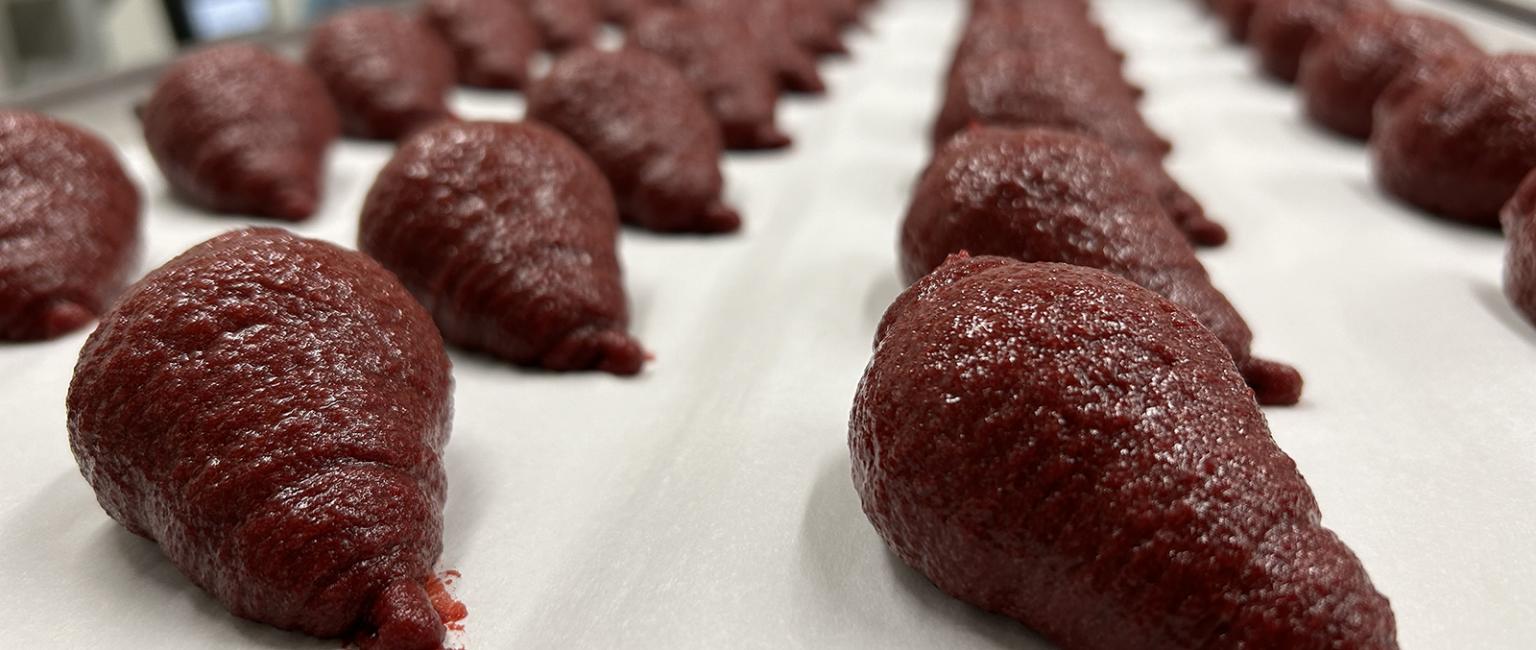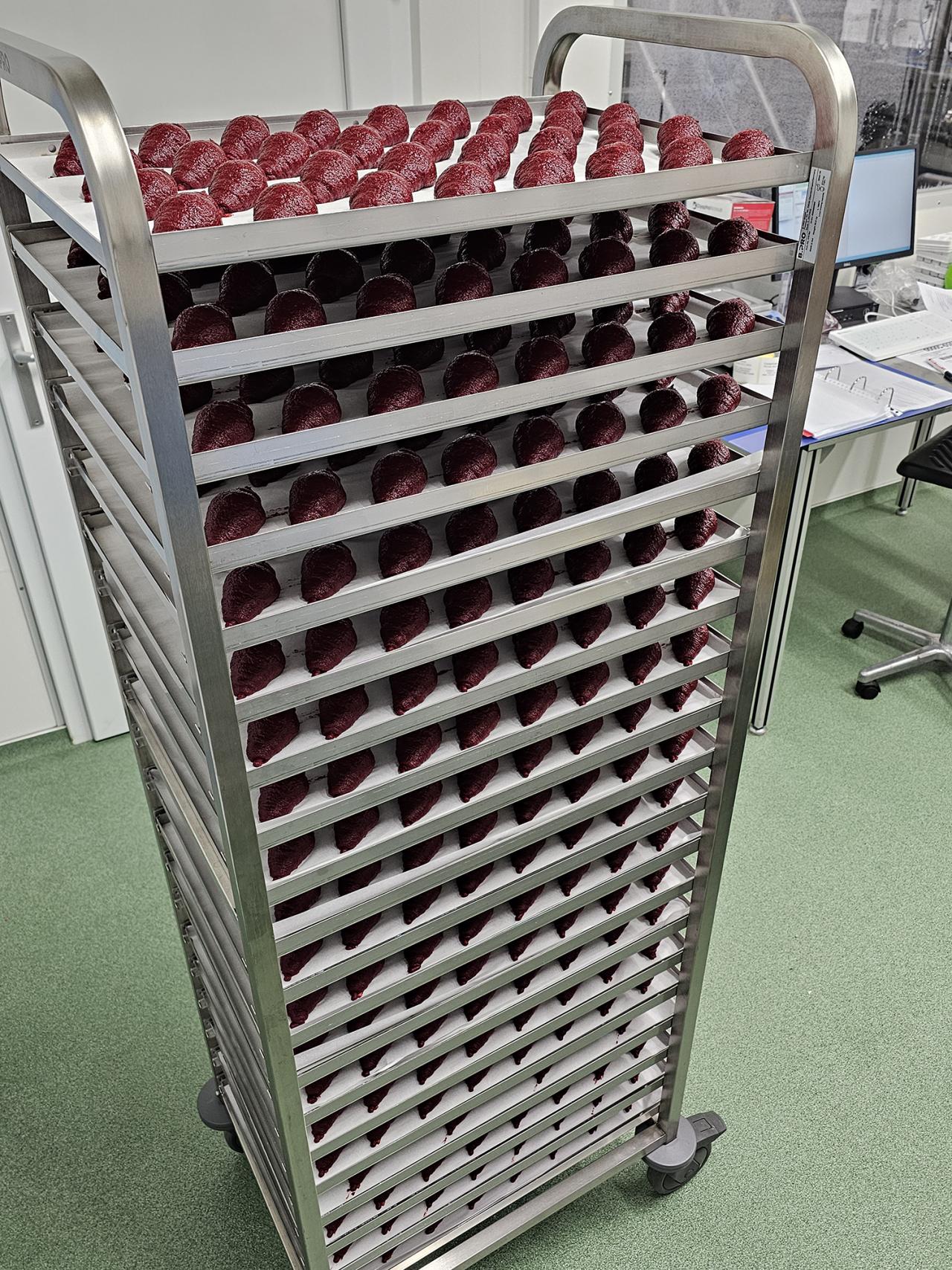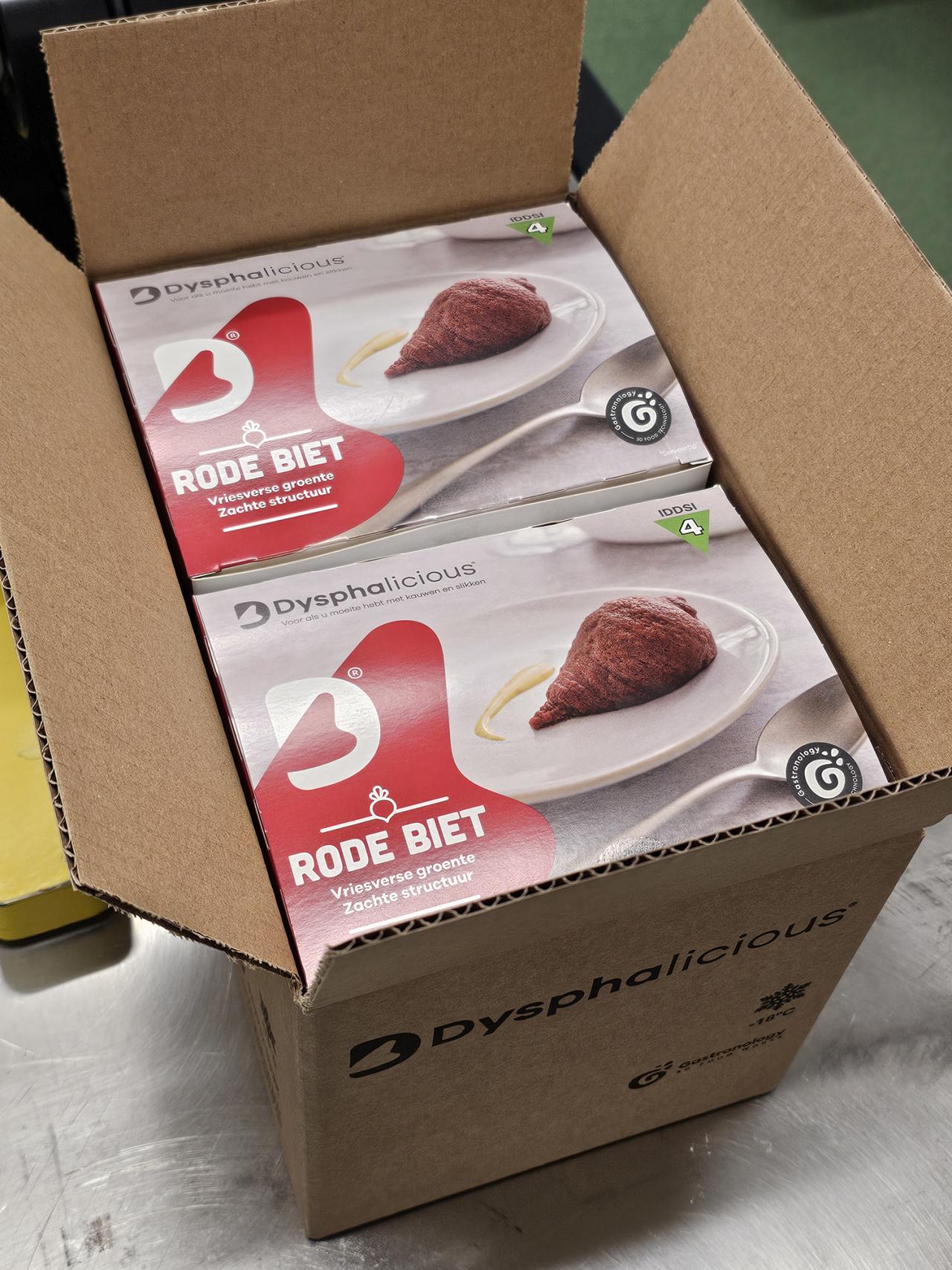
Industrial scale 3D food printing at Gastronology
Press release April 2024
Gastronology 3D Food Works in Bergen op Zoom, the Netherlands, is one of world’s first companies to have started with industrial scale production of 3D printed food, which is marketed under the name ‘Dysphalicious’. In recent years, the company has conducted intensive research into the composition and application of 3D printed food products and into the technology to produce on industrial scale using 3D food printers.
Gastronology's 3D food products are primarily intended for people with chewing and swallowing problems. These problems manifest themselves, among other things, as a result of old age or certain syndromes such as ALS, MS or Huntington. The first production batches are delivered to healthcare centers and hospitals; they will gain experience in the application of Gastronology's 3D food products in the coming six months.
Peter Nieuwkerk founded Gastronology 3D Food Works in 2019, with the ambition to develop attractive, tasty and healthy food for people with chewing and swallowing problems. “Often they are offered food from the blender or as pasta and gels, which does not always look attractive, does not smell pleasant and does not taste good. “ We believe that all people are entitled to healthy and delicious food”, says Peter Nieuwkerk. “Our solution is specifically intended for people who, due to illness, physical complaints or lack of appetite, have difficulty eating or just do not like certain foods. In recent years we have developed a number of healthy and nutritious products based on potatoes and fresh vegetables, which are recognizable and look very tasty thanks to 3D food printing. As a result, eating moments for patients and residents of healthcare centers become a nice experience again instead of an unpleasant necessity.“

Fresh products
Gastronology only works with fresh products that are processed into tasty and healthy purees, based on specially developed recipes by SVH Masterchef Eugène Swalen. These purees are processed with 3D food printers into recognizable and visually attractive products. The products are then frozen and delivered to healthcare centers and hospitals. Not only is a high nutritional value and a good taste experience guaranteed, but also a high quality of the 3D food products. The entire production process meets the strict food safety requirements imposed on the food industry.
| |

